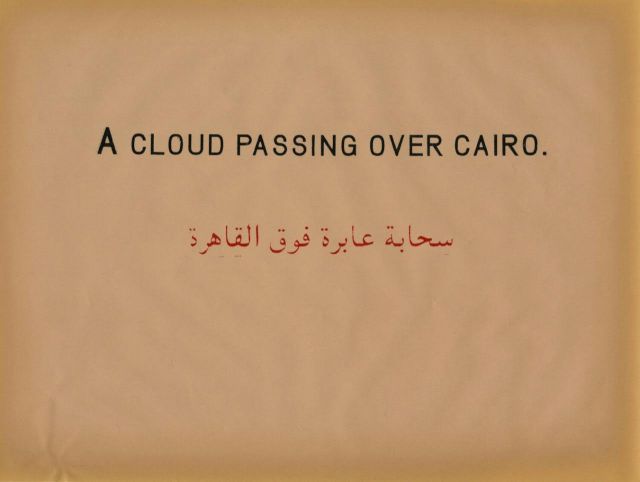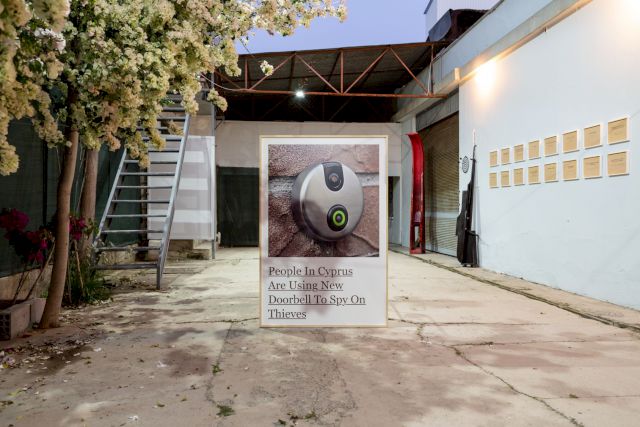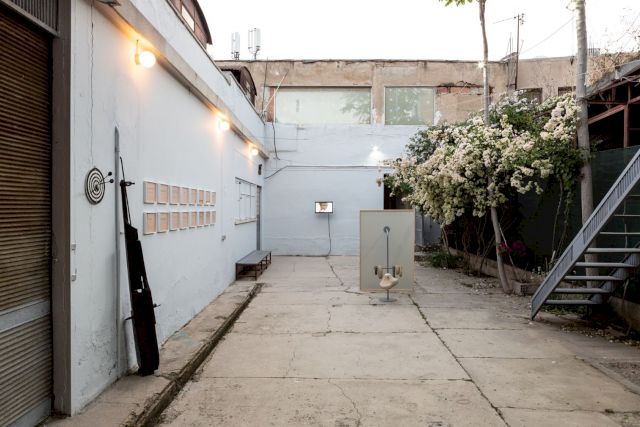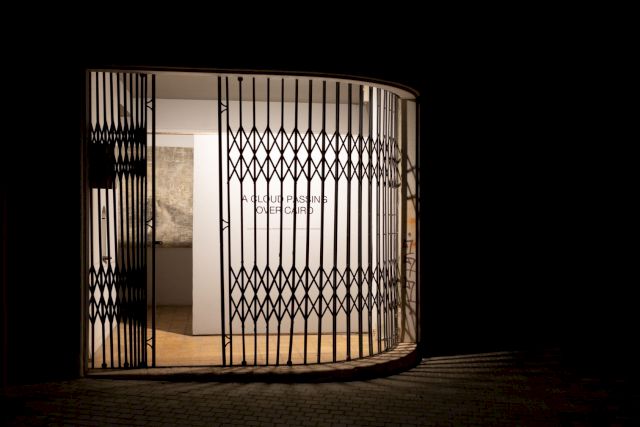BMW Art Guide by Independent Collectors
Anastasios A. Gkekas
The Office Collection - Nicosia, Cyprus

How important is having the title of “collector” to you?
I would imagine that it is of equal importance to the usage for example of the adjective “independent” in the appellation “INDEPENDENT COLLECTORS”.
Does your collection follow a specific theme or particular artists?
Regarding the first part of your question, I would say that the collection ended up in an organic way to collect somehow anthropocentric and political art, hopefully accentuating the qualities on “art” and “anthropocentric” and not so much the “political”. After all, nowadays, using the term “political” might be an ambiguous, “progressive” interpretation of K. Marx’s ideas, from which I prefer to keep some distance. The artwork needs to appeal to my own preferences and personal taste as well as to aesthetically satisfy me - in the short or in the long term - this is a requirement. On an interesting phone call I had with you (Independent Collectors), I recall that I shared a F. Nietzsche quotation - he considered “Art’s Mission” as a function that helped us to confront our own nightmares and liberate our own eyes *(La mission suprême de l' art consiste à libérer nos regards des terreurs obsédantes de la nuit).
As for the second part, I follow, or even “stalk the work” of some artists, especially the ones belonging to a younger generation like Robert Montgomery, Dimitris Merantzas or Nazgol Ansarinia.


Do you have a personal relationship with the artists you collect?
Sometimes yes and some are of a great value for me, but not always. Even when engaged in their very presence, I do not mind when the “dominant” one in the relationship is their work; after all I am not “collecting artist’s egos”, nor will I “marry” their character. I do not necessarily chase good moments with them, I just happen to like some of their works. I find that it's the artwork that should speak for itself and stand alone first and foremost - not the act of socializing or status of identity. Moreover, Ι sometimes I find it’s better like this: to keep a respectfully reserved and quiet distanced relationship. Besides, a closer rapport might not work for various reasons - for example I am prone to a quite honest, direct character, which some people can take personally. Good artists nowadays, due to the excessive marketing, are like small gods, or deities. It has become that the very essence of creation can bring them to think of themselves as divine creatures - and for me no matter how magical your talent is, if you expend the limits of politeness, you can still be respectable but merely only as an artist.
Is there an artwork that you love but can’t live with due to size, medium, or value?
I cannot easily say that - without considering if the Office Collection is to be saturated, I find it already has a concrete direction and solid body of works. Extensive research and instinct have possibly fortified decent preparations in advance for further acquisitions. I personally prefer researching the artist’s works before they become well understood by wider international audiences and often or even before the period they become internationally popular. From the moment they are broadly accepted or become a bit more commercial, collecting game is no longer as challenging for me and thus less enticing. In this collecting process, I almost seek to find and understand something before others do - including (with attention to the above) the artists themselves - among the artworks. It happens sometimes even that the artists too, wish to keep some of their “seminal” works for themselves. For me it does not work like this - I might have already owned the work before it became the artist’s favourite. When others “realize” the “loss”, from one point of view (or my own) it might be too late. I mean, it might be “too late” for the gallerists or the artist to withdraw the royalties of an artwork, or to get back the work. To be honest, I don’t mind at all to let anyone who is very “hungry” for this potential (re)acquisition - including the artists themselves, but I’ve only suggested this in a hopeful, positive way; attempting to try and create something new and even stronger is a requirement and keeping your own works of artist close to you can be risky and unhealthy. To give an extreme example: I would have never wished what happened to Notre Dame’s roof, however it became an opportunity to see many interesting recovery projects from all over the world!
In parallel, when someone is in contact with ancient Greek values, he/she can be influenced to measure everything by a “human proportion” scale. The Office Collection can’t escape these measurements and collecting must be in accord with other - just as important - activities. To sum this all up, I find no reason for a collector to feel completely dominated by his/her passion to a level that he/she could not live without art. After all, the things that we are seeing and experiencing in art, if we dig deep inside, we might realize that we already have them internally and the artworks just make them appear to the surface.
Despite this, to answer your question very directly, a challenging work for my acquisition was Carol Christian Poell’s work, "SQUARTTER" that was presented at the 10th Gwangju Biennale in Korea.

In your opinion, what mistakes do young collectors commonly make? And what mistakes did you make when first starting on your collecting journey?
I myself maybe have not had any serious ones, because I have not even had the luxury to make any strategic mistakes. Nevertheless, it depends also what you call “mistakes”, because some can be truly beautiful and intriguing. After all life without passionate mistakes is not a real life. A ‘mistake’ I might have done or will do is to request several artworks from the same artist. At first glance, after a specific number, for example five or six pieces, it might not make sense to add more, since you could enrich your collection with a new artist. Despite that, there are artworks that can work better in series and this can make numbers to work completely different.
What has the reaction been like from visitors of your collection since making it publicly accessible? Does this reaction impact you and what you collect?
First of all the idea to open the doors of your own collection to the public, is great. Apart from the general positive feedback that was already received, this direction has made people have a second thorough look into the collection as an overall. If the very own reasons of collecting are personal, - I mean of an esoteric character - , then what you collect is being valued from what you personally like and you cannot easily be pleased from other’s taste or have such a strong desire towards a positive public feedback.
I am after a new artwork because I need it for my own, personal welfare - not for the sake of expanding a collection or belonging to a privileged group of people that can order contemporary art or even making something publicly accessible - this moral obligation comes maybe after. And what is not a first priority, is not the top priority. As a person that has worked long term and long hours, the coexistence in the same ‘lieu’ with some artworks is a kind of balsam; it’s a special moment that sometimes I like to share with others but most of the time I enjoy it in my solitude.
In parallel, I cannot overlook that organized efforts like yours can make the collections look more serious as entities of their own and it’s always the collector’s responsibility to opens their doors to the public - after all its possibly a moral commitment and a mission towards the artworks.


How has the attitude to collecting changed since you began?
It is the same drive and instinct; something like hunting. I would say my own coexistence with the works can somehow be called symbiotic since in this single life, I like to make “use” of something rather than just own it. I would say that the right collecting feeling is when you cannot take the work out of your mind. - Beauty accidentally can be forgotten from the routine of someone’s daily life… and some work’s presence may resist the oblivion without even being loud about their existence. This unique feeling triggers me.
Which publicly accessible private collection would you recommend visiting?
In France I would have recommend the collection of the Chateau La Coste, courtesy of the McKillen family. In addition, the Sammlung Boros collection in Berlin, Germany and a special one, that of Mr Ioannis Contaxopolos, nearby Brussels in Belgium. He has the most complete Jean Cocteau collection of works - to the extent that a “catalogue raisonné” can be found in his estate. I could have done similar for the Persian Nazgol Ansarinia, but her wise gallerists would have not easily allowed that to anyone.
All images courtesy The Office Collection, Nicosia, Cyprus
More Information on The Office Collection
